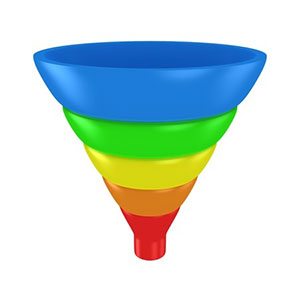- Sep 3, 2014
- By Cleriti Blogger
- In Marketing Strategy and Planning, Website Design and SEO



We're always thinking, discovering and sharing our knowledge of how to connect with customers in the digital age. Here we share some of those thoughts.

 Getting customers into the top of the funnel is the easy part. Blog posts, good SEO and social media content can all make potential buyers aware of your products. A customer that has arrived at the bottom of the funnel is easy as well. They don't need to be told why to buy, they just need you to make the "how" easy for them.
Getting customers into the top of the funnel is the easy part. Blog posts, good SEO and social media content can all make potential buyers aware of your products. A customer that has arrived at the bottom of the funnel is easy as well. They don't need to be told why to buy, they just need you to make the "how" easy for them.
But, when a customer knows about your product or services, but hasn't yet made the jump to buying, it can be tricky to figure out how to move them through the marketing funnel. It is important not to neglect customers in this valuable space. By including those prospects who are in between awareness and decision in your marketing plan and sales budget, you can increase your sales and bring back more repeat customers. These customers respond to different content than those at other stages. Speaking to their specific needs can help build the relationship that you want.
You have their attention. Now your job is to show them the way that your product is the best one to solve their current dilemma. Identify competitors and show why your company is best. Describe the ways that your product is the most beneficial option. Include well-written content in your sales budget to influence these highly qualified prospects.
A few ideas for content that converts to sales:
By working to keep customers engaged and interested once they have entered the marketing, you can build a much stronger relationship. You build a stronger case for why your product is the best. This leads to more sales, higher satisfaction and customers who are more likely to return to buy from you again. By including this sort of marketing content in your sales budget, you build better sales now and more sustainable profits over time.
We know what it takes to create meaningful connections with customers.
Subscribe to our newsletter and start thinking with Cleriti.

